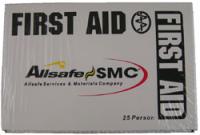Medical emergencies vary greatly, depending on types of job, disaster, and the work site. Oilfield workers, heavy equipment workers, etc. are exposed to different safety risks than those who work in food service, warehouses, or offices. No matter what type of occupation is involved, all employers should have an Emergency Action Plan in place.
Employers should include their workers in the planning process: ask for their ideas about proper emergency responses. After the plan is developed, review it with employees to be sure everyone knows what to do during and after an emergency.
Steps to follow in planning for medical emergencies:
- Offer and encourage employees to have proper CPR and First Aid Training. The American Red Cross, local safety councils, or local medical personnel are willing to provide this training.
- Have personnel records of all employees’ emergency contacts readily available. This information should be stored with other vital records in your emergency kit, and at another off-site location as well.
- Encourage employees to disclose any medical condition that might require special attention during an emergency.
- Keep First Aid Kits in stock and readily accessible. Consult with a physician to instruct you on the proper supplies needed.
- Locate the nearest medical facility near your work site.
- Contact a local ambulance service to ensure emergency transportation is readily available.
Again, communicating with your employees in the planning of emergency action plans will result in a smoother, successful outcome for anyone in need of medical attention. It is the responsibility of employers to put safety first in their workplace; however, if all workers play a part in helping a co-worker in a time of medical necessity, all the planning and preparation is worthwhile!
OSHA
